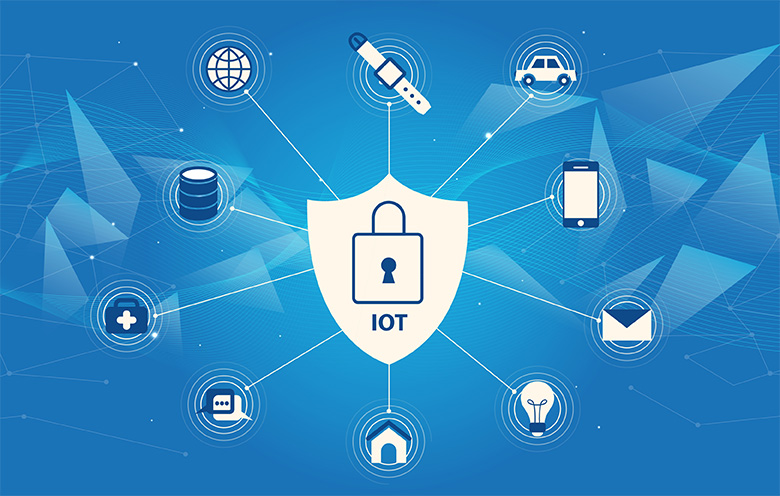As the Internet of Things (IoT) devices continue to evolve, the integration of these devices with cloud environments becomes prevalent. There is a good reason why this combination is favored; centralized data storage, scalable computing power, and real-time analytics. However, it also presents real and significant security risks that need to be addressed properly.
Securing IoT devices in cloud environments is important to safeguard sensitive data, protect user privacy, and maintain the integrity of IoT environments. Today, we aim to provide you with effective ways to secure IoT devices in the cloud, address security risks, and highlight the best solutions. Let’s jump into the article and learn all about IoT security in cloud environments.

IoT Devices in Cloud Environments
IoT devices are everyday physical objects surrounded by sensors, actuators, and connectivity capabilities that allow them to receive and share data over the Internet. These devices are being used in a wide range of industries and applications, ranging from smart-home appliances to autonomous vehicles.
When these devices are converged with the cloud, they leverage the features of cloud computing services. When combined, cloud services are capable of deriving insights and processing massive amounts of data generated by IoT devices thanks to their data analytics features. The integration of these two also facilitates remote device management, software updates, and seamless integration with other cloud applications.
While converging the cloud and IoT devices offer immense benefits such as real-time analysis, flexibility, processing vast amounts of information in no time, and actionable insights, they do bring forth security challenges. IoT devices, often resource-constrained, may have vulnerabilities in their hardware or software, which means that they are an ideal target for cybercriminals. Moreover, the massive amounts of data generated and shared between several IoT devices pose significant challenges in managing IoT deployments.
To prevent these risks, organizations should figure out a robust security posture that includes robust authentication mechanisms, secure communication protocols, regular firmware updates, and rigorous access controls.
Best Practices for Securing IoT Devices in Cloud Environments
Secure communication protocols
Using secure communication protocols is essential to protect IoT devices in the cloud. IoT devices exchange a vast amount of information over the Internet as explained previously, making them vulnerable to cybercriminals looking for sensitive data. To prevent this risk, use secure communication protocols, such as TLS, between the IoT device and the cloud. Always employ end-to-end encryption to ensure data confidentiality.
Defense-in-depth security measures
Make sure your security approach is layered with multiple security measures. Protect your IoT devices and the cloud environment by implementing firewalls, intrusion detection systems, and intrusion prevention systems. A layered approach ensures that this convergence is secured against a variety of cyber threats and cloud security vulnerabilities are addressed comprehensively.
Ensuring the physical security of IoT devices
It’s important to remember that IoT devices are physical objects that need to be secured physically as well. This means that you need to secure the areas where IoT devices are deployed using physical locks, tamper-resistant enclosures, and video surveillance. Also, make sure to implement strong access controls to storage areas where IoT devices are placed.
Strong authorization mechanisms
Implement robust authorization and verification mechanisms such as strong passwords, digital certificates, or biometrics. This will help you identify the users accurately before granting access and reduce the risk of unauthorized access. Also, make sure to implement measures physically such as deploying biometric readers to places where IoT devices are stored.
Keep your cloud infrastructure up to date
Updates on the cloud applications and services are highly critical since most of the time, your cloud provider will fix security vulnerabilities with their updates. Make sure to keep all software up to date to keep up with these patches.
Security Solutions for IoT Devices in Cloud Environments
Securing IoT devices in cloud environments may require several security solutions designed specifically for these challenges. Here are some of them for you to consider;
Intrusion detection and prevention systems
Intrusion detection and prevention systems (IDPS) monitor network traffic constantly and detect anomalies in real time. IDPS solutions are highly capable of mitigating potential threats, preventing unauthorized access attempts, and detecting malicious behavior.
Security analytics and threat intelligence
Use security analytics tools and threat intelligence feeds to gain insights about emerging threats and potential vulnerabilities in your systems. These two solutions will help you stay one step ahead of the criminals and identify risks proactively in order to take measures in time.
Security orchestration and automation
Utilize security orchestration and automation platforms to streamline security operations in the system. These solutions are able to automate incident response procedures, provide rapid threat detection, and as a result, improve overall operational efficiency.
Security information and event management (SIEM) solutions
Deploy SIEM solutions to analyze security logs and events from IoT devices and the cloud infrastructure. These solutions offer real-time monitoring of the system, threat detection capabilities, and prompt response to security incidents.
Network segmentation and isolation
Network segmentation solutions allow organizations to create separate network components, for IoT devices, cloud infrastructure, and other digital assets. These solutions help organizations contain a security incident by isolating the attack in a single component and taking measures to prevent it from spreading to other segments. It is also a great practice to enforce access controls and manage who can access what.
Conclusion
Both IoT devices and the cloud are relatively new things to us, and we are still exploring the best ways to utilize these technologies while also keeping our resources secure. Since the emergence of IoT and the cloud presents new challenges, the best way to safeguard sensitive data in these mixed environments require the tailored practices we explained in this article.




